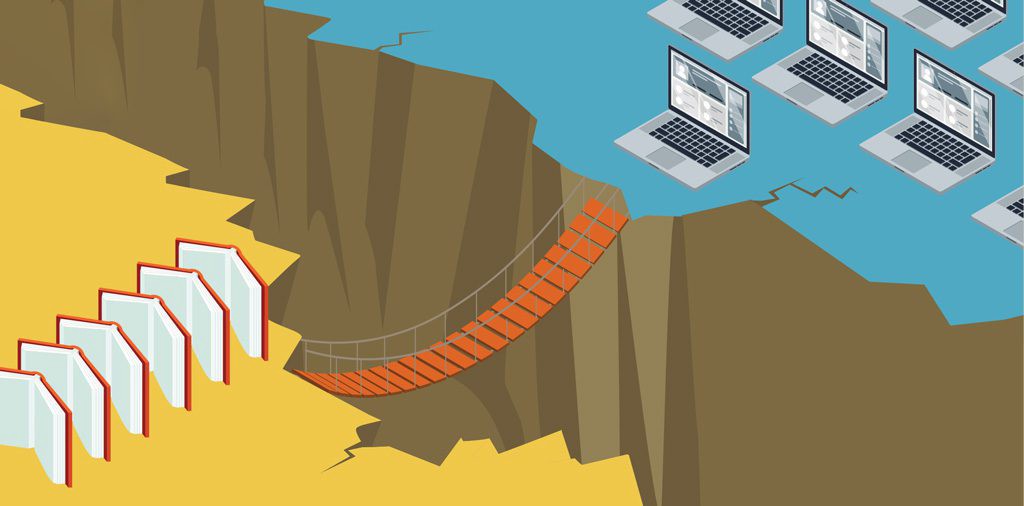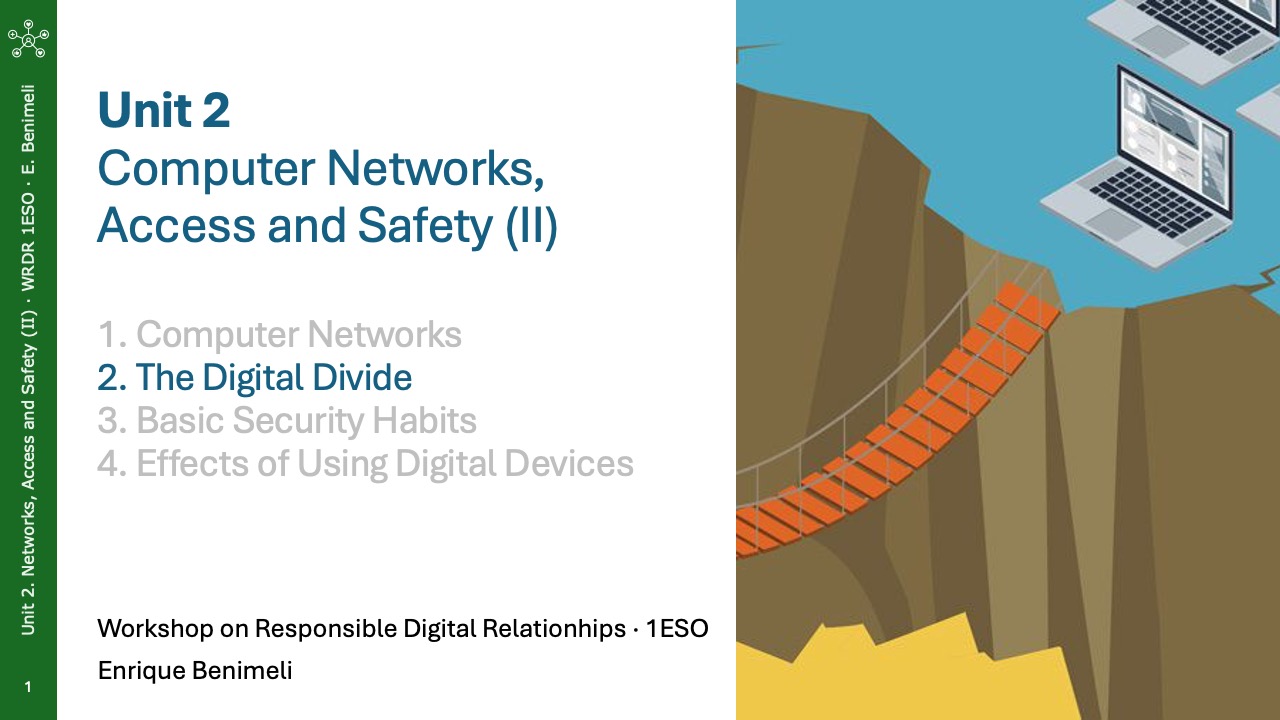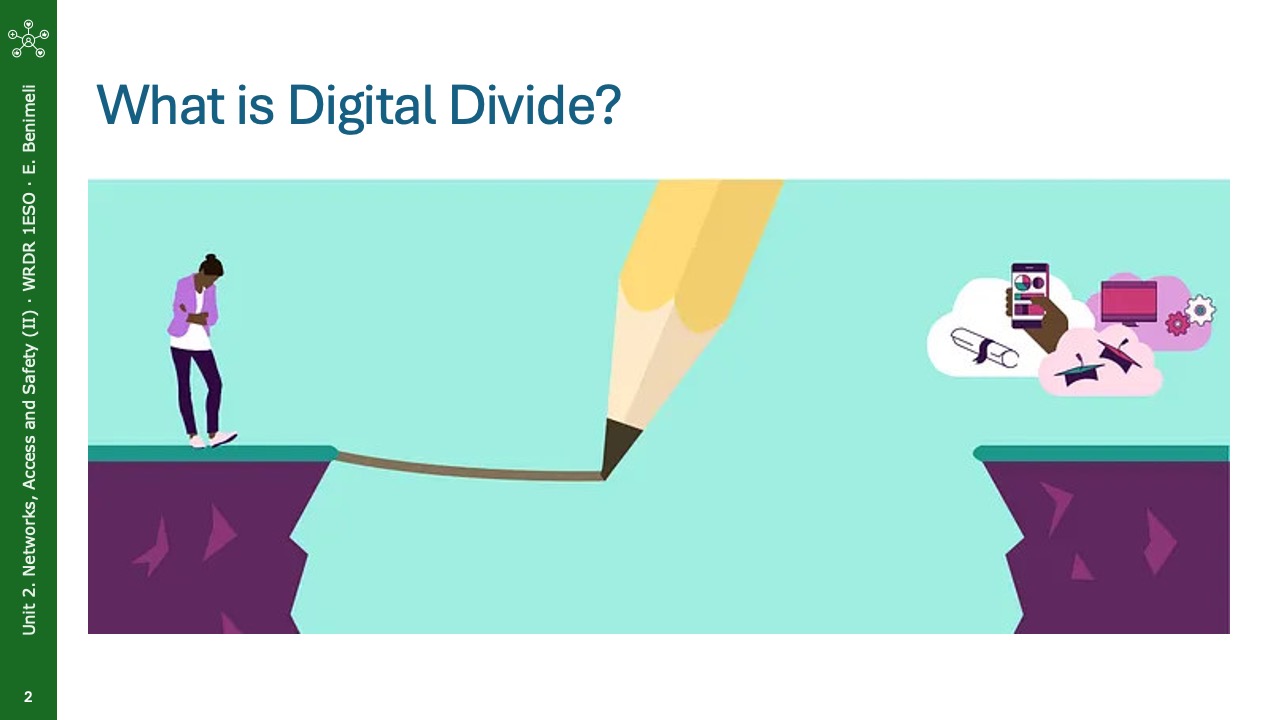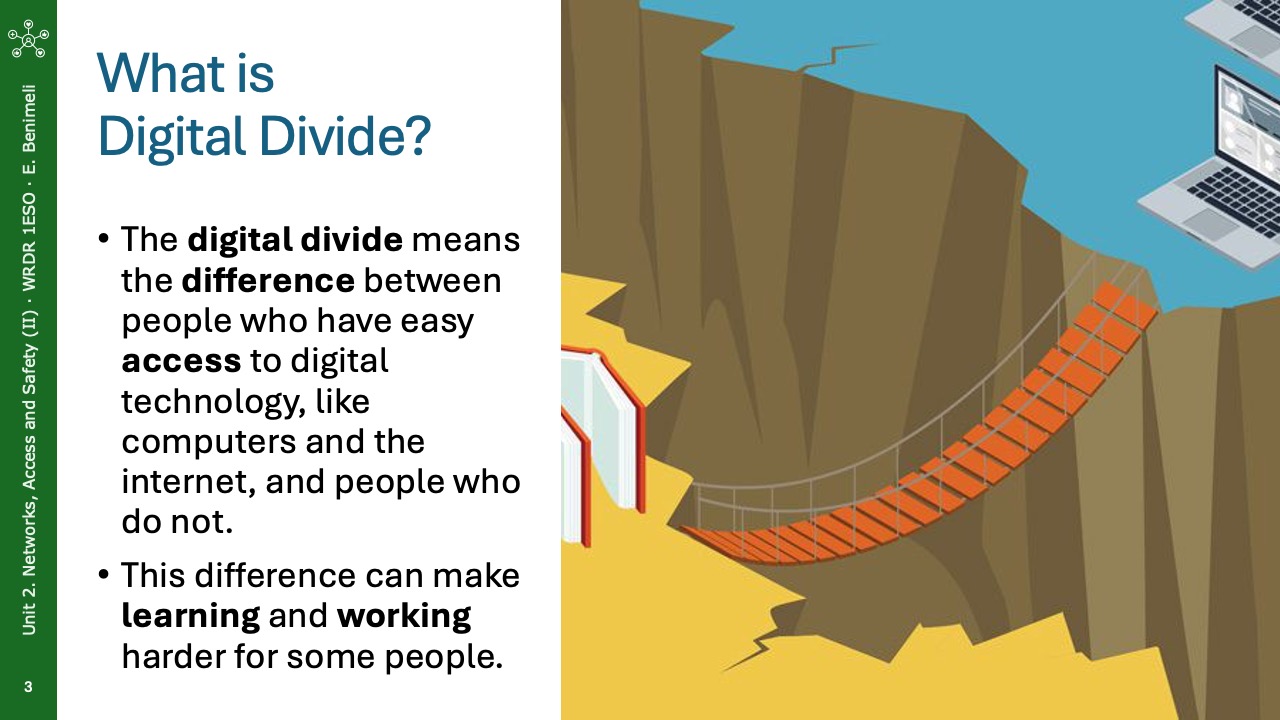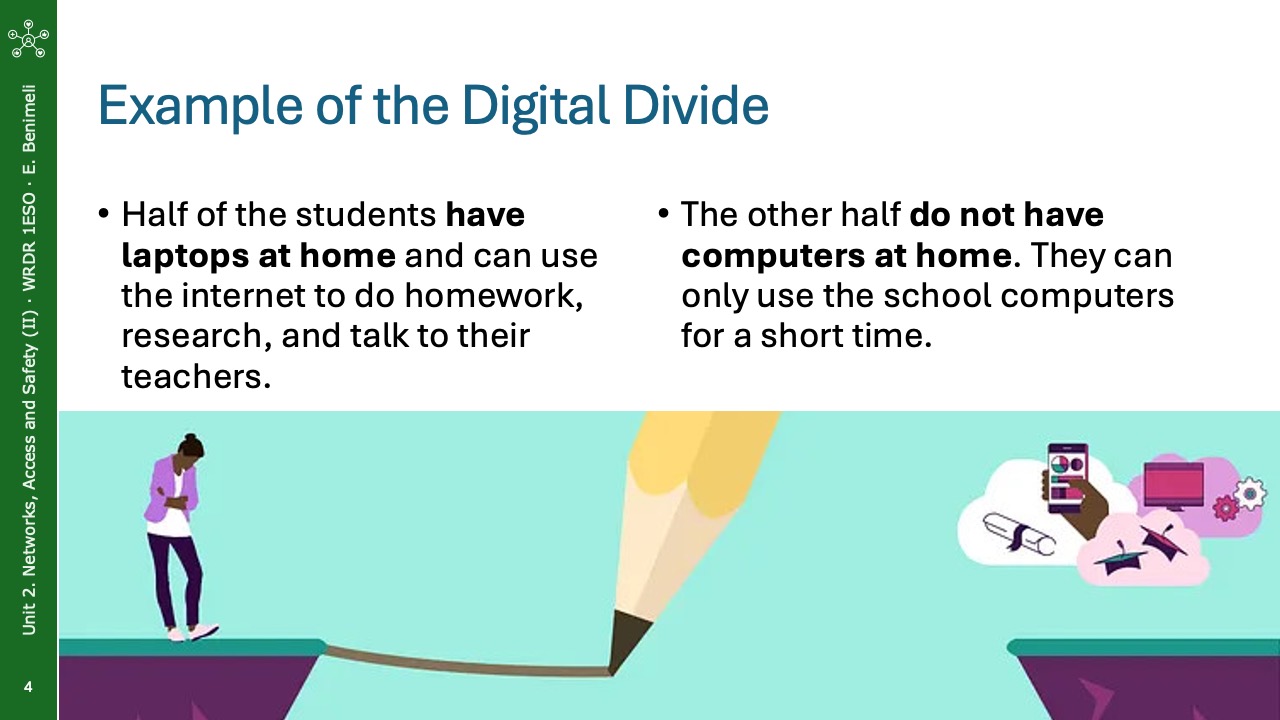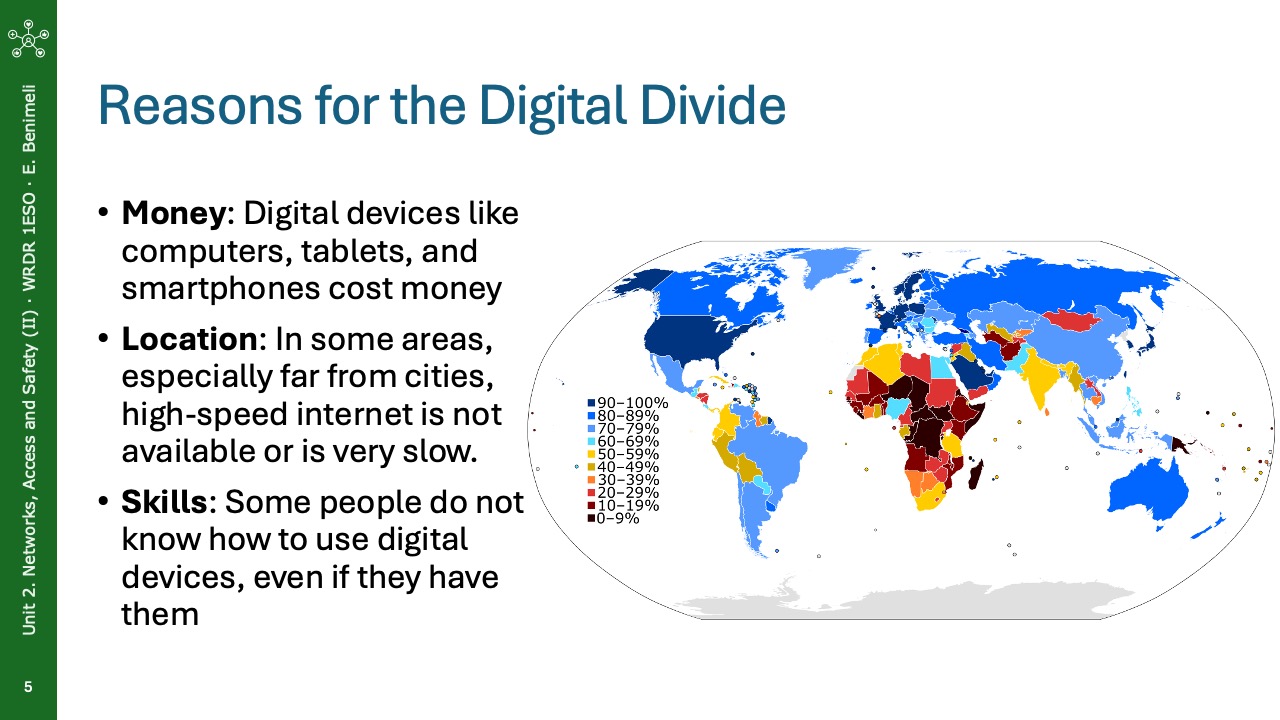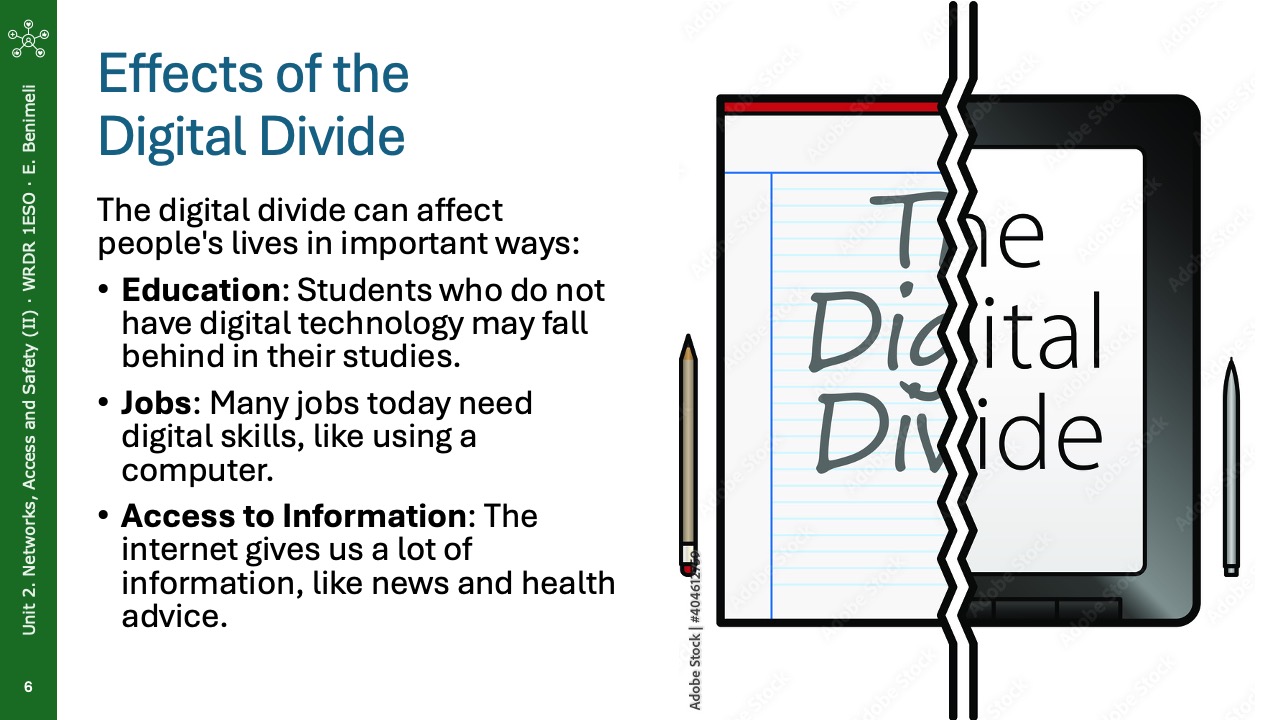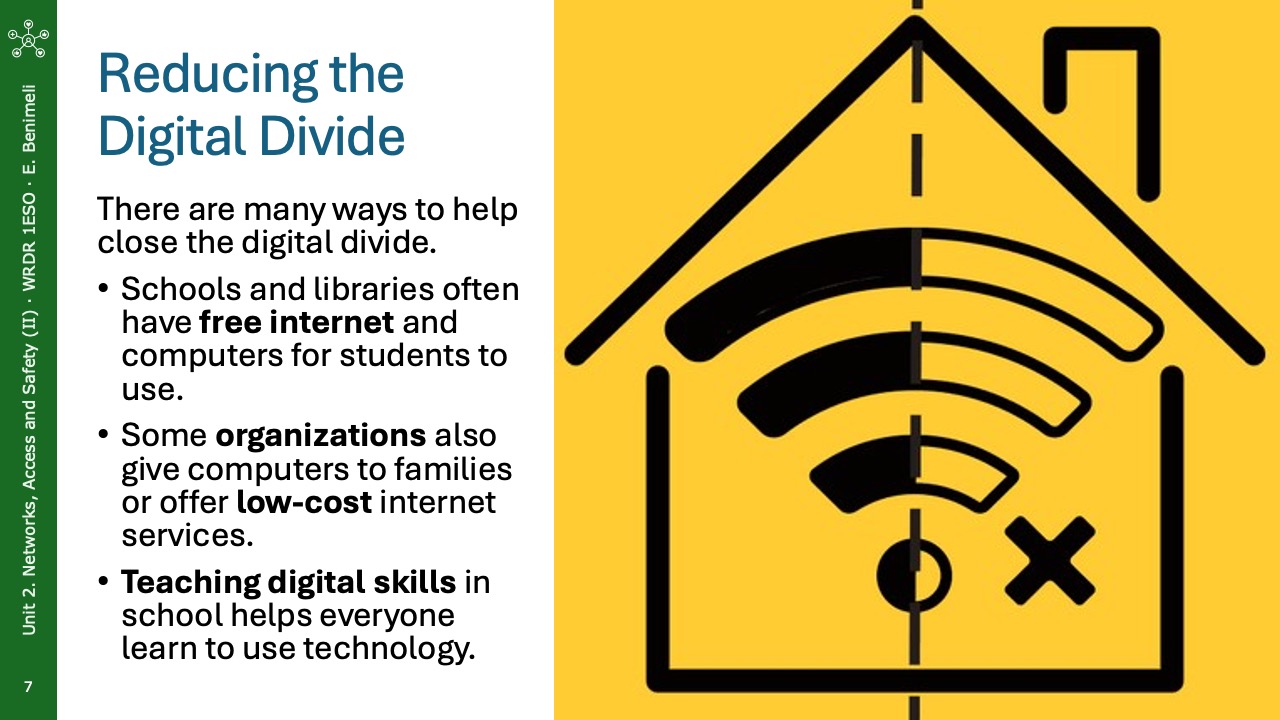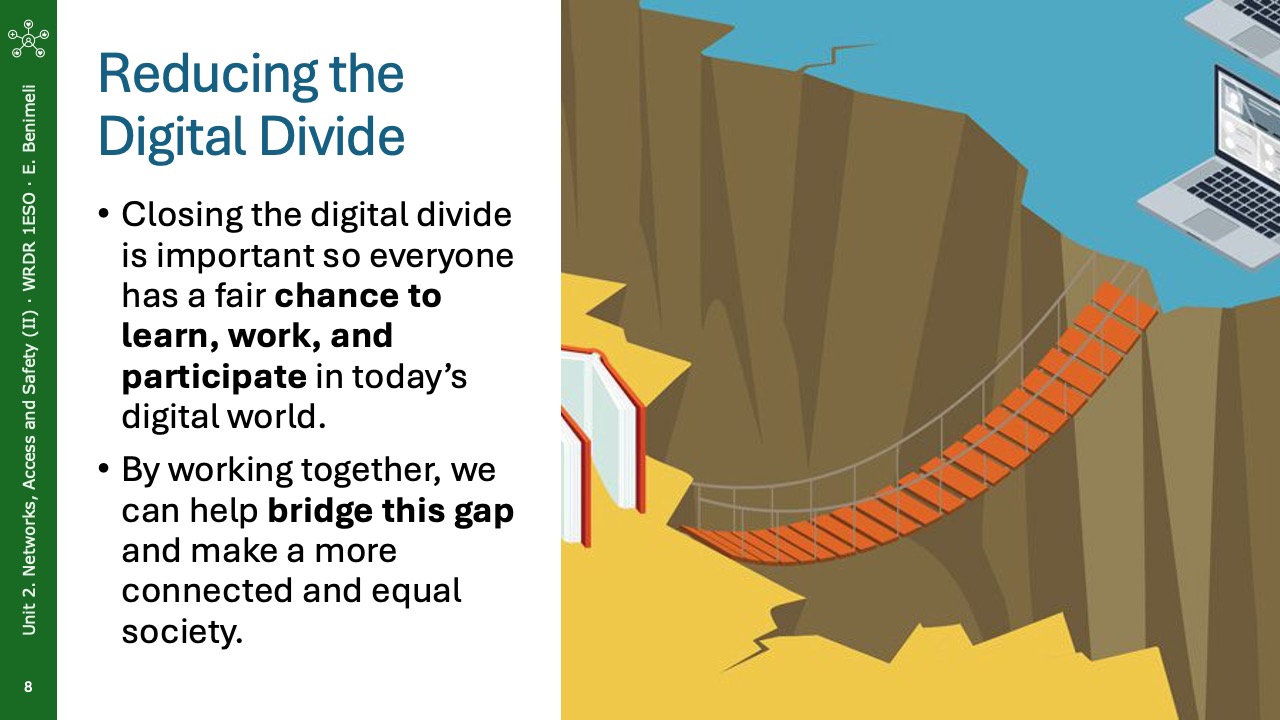The Digital Divide
This difference can make learning and working harder for some people.
Example of the Digital Divide
Imagine a classroom. Half of the students have laptops and can use the internet to do homework, research, and talk to their teachers. The other half do not have computers at home. They can only use the school computers for a short time. This creates a difference in how these students can learn. This difference is the digital divide.
Reasons for the Digital Divide
-
Money: Digital devices like computers, tablets, and smartphones cost money. Families with more money can buy these devices and pay for fast internet. Families with less money may not be able to do this.
-
Location: In some areas, especially far from cities, high-speed internet is not available or is very slow. This makes it hard for people in these places to use the internet for school or work.
-
Skills: Some people do not know how to use digital devices, even if they have them. Schools that do not have enough resources cannot teach these skills well. Also, adults who did not grow up with technology may find it difficult to learn.
Effects of the Digital Divide
The digital divide can affect people's lives in important ways:
-
Education: Students who do not have digital technology may fall behind in their studies. They may not be able to do online research, finish digital homework, or join online classes.
-
Jobs: Many jobs today need digital skills, like using a computer. People without these skills may have a harder time finding a good job.
-
Access to Information: The internet gives us a lot of information, like news and health advice. People without internet access may find it difficult to get the information they need.
Reducing the Digital Divide
There are many ways to help close the digital divide. Schools and libraries often have free internet and computers for students to use. Some organizations also give computers to families or offer low-cost internet services. Teaching digital skills in school helps everyone learn to use technology.
Closing the digital divide is important so everyone has a fair chance to learn, work, and participate in today’s digital world. By working together, we can help bridge this gap and make a more connected and equal society.
